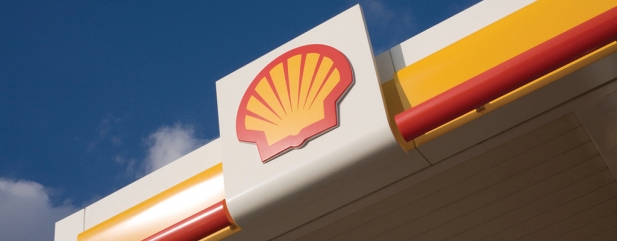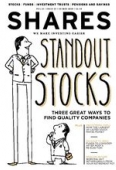Archived article
Please note that tax, investment, pension and ISA rules can change and the information and any views contained in this article may now be inaccurate.
How does Shell make its money and should you buy its shares?

With a market cap of more than £200bn Anglo-Dutch oil major Royal Dutch Shell (RDSB) is comfortably the largest company on the UK stock market. To put its position into perspective, it accounts for around 10% of the FTSE 100 index on its own.
Given its heavyweight status in London and the generous stream of dividends it pays, there is a good chances many of us will have at least some exposure to the stock either directly or through an investment fund. Bottom line: if you are a UK investor, Shell really matters.
But how much do you know about where and how Shell makes its money? For all that it has pledged to reduce its carbon footprint, Shell still derives nearly all of its revenue from fossil fuel-related activity. A structural shift to renewable energy in many parts of the world therefore raises questions over the long-term sustainability of its dividend. At the current share price of £25.52 Shell is yielding 5.7%.
UNDERSTANDING THE DIFFERENT PARTS
Shell is an integrated energy business. This means it has operations in oil and gas exploration, production, marketing, refining, transportation and distribution. In a nutshell it is involved in everything from drilling and finding new sources of oil and gas to selling you petrol at the pump.
This gives it almost unrivalled insight into the energy market, the downside being that its many moving parts make it difficult to value. For example, while higher oil prices are generally good news for Shell, they also have a negative impact on margins in its refining operations. The situation is further complicated by the fact the different parts of Shell sell products and services to each other.
In this article we will examine the separate components of the business in more detail and what they contribute in terms of earnings. We will also discuss Shell’s strategy and how this underpins its long-term track record of generous dividends.
INTEGRATED GAS AND NEW ENERGIES DIVISIONS
Shell’s main response to the changing patterns in energy consumption and growing political pressure over climate change has been to target natural gas.
In a June 2015 speech Shell chief executive Ben van Beurden said of natural gas: ‘It is flexible. Its supply is abundant and diverse. Its range of uses is still expanding. It is a low-carbon, clean-burning ally to renewables such as solar and wind. And it makes economic sense.’
Expanding in this area was a key rationale behind its £36bn merger with BG in 2016. It now has a leading footprint in liquefied natural gas, which involves cooling gas to a liquid state so it can be shipped and stored. It also includes the conversion of natural gas to GTL (gas-to-liquid) fuels.
This part of the business also encompasses the New Energies division. This is in effect the ‘green’ part of Shell and it has plans to invest between $1bn and $2bn a year out to 2020 in areas like wind and solar power, electric vehicle infrastructure and biofuels.
This might sound like a significant outlay, but it should be seen in the context of overall capital expenditure of between $25bn and $30bn a year.
UPSTREAM DIVISION
Upstream includes exploration and production of conventional oil and gas, deep water exploration and an increasing contribution from shale – the rock containing previously untapped sources of oil and gas which, in the past decade, has been exploited through improvements in technology.
The Upstream division also encompasses the marketing and transportation of crude oil and natural gas as well as the operation of infrastructure such as pipelines which help deliver these resources to market.
This part of the business is most exposed to commodity price volatility, reflected in the recent earnings trend which, as the chart shows, saw this part of the business chalk up a loss in 2018.
DOWNSTREAM DIVISION
The Downstream division encompasses the refining of the crude oil which comes out of the ground to generate oil products such as petrol, jet fuel and heating oil. Globally the company has 21 refineries with the capacity to process a total of 2.8m barrels of crude oil per day.
It also markets refined products like petrol and lubricants with 44,000 Shell-branded petrol stations in more than 75 countries.
In addition, the division manufactures chemicals for a range of industrial customers. These products are used in the manufacture of everything from cars and detergents to bike helmets.
It includes the oil sands business, from which Shell has increasingly retreated of late.
HOW SHELL SEES THE DIFFERENT PARTS OF ITS BUSINESS
Shell puts its businesses in three different categories.
– Cash engines – which as their name suggests are expected to provide reliable cash flow to fund dividends and to strengthen the balance sheet.
– Growth priorities – areas in which the company is investing to create the cash engines of the future.
– Emerging opportunities – areas which could become growth priorities once they have been further developed and could prove to be a substantial source of future cash flow.
THE INVESTMENT CASE
Despite its big step out into the natural gas market, Shell has not really been a rapid growth story in recent years.
An uptick in revenue and earnings has been driven by recovering commodity markets and Shell has been selling off assets to help reduce borrowings built up amid the oil price crash and through the takeover of BG.
As investment bank Berenberg observes: ‘Shell has an attractive slate of assets starting up over the coming years, including profitable developments in Brazil and further LNG projects. Production is not growing however, due to the substantial divestment programme under way to de-lever the balance sheet.’
Shell nonetheless is very much an income play for investors. It has not cut its dividend since the Second World War and its leaner structure and more efficient operations help underpin its dividend credentials.
Unlike its rival BP (BP.), Shell has not increased its dividend despite the recent surge in oil prices. It has been buying back its own shares to help compensate shareholders for the scrip dividend, introduced in early 2015, which allowed investors to receive their dividends in shares or cash.
Although this reduced pressure on Shell’s balance sheet, by increasing the number of shares in issue it was also dilutive to shareholders.
An investor day in June might spell out plans for further capital returns to investors.
A near 6%-yield is highly attractive to investors and we rate this as an excellent stock to own, particularly if you rely on income from your investments. However, you do need to keep a close eye on regulatory and political developments as climate change becomes more of an issue.
Equally the world will not wean itself off fossil fuels overnight and there is reason to believe the company can extend its proud 70-plus year dividend track record into the medium-term at least. We give Shell a solid ‘buy’ rating.
Important information:
These articles are provided by Shares magazine which is published by AJ Bell Media, a part of AJ Bell. Shares is not written by AJ Bell.
Shares is provided for your general information and use and is not a personal recommendation to invest. It is not intended to be relied upon by you in making or not making any investment decisions. The investments referred to in these articles will not be suitable for all investors. If in doubt please seek appropriate independent financial advice.
Investors acting on the information in these articles do so at their own risk and AJ Bell Media and its staff do not accept liability for losses suffered by investors as a result of their investment decisions.

 magazine
magazine
















